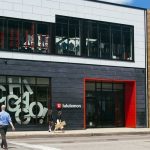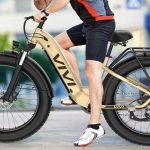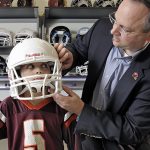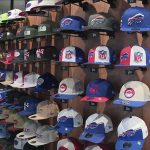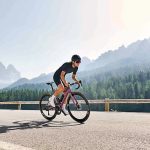Although apparel and especially footwear performed well, weakness in most other categories and particularly in North America led to a widened loss for Amer Sports in the second quarter. Citing the tough economic climate and lower-than-expected level of pre-season bookings on a full-year level, Amer also reduced its earnings outlook for the year. Amer now expects EBIT, excluding a capital gain of 13 million ($20 mm), will amount to between 90 million and 105 million ($138.6 mm to $162 mm). The company’s previous guidance ranged between 100 and 130 million ($154 mm to $200 mm).
“We could see that the challenging environment that we had been talking about continued,” said Roger Talermo, president and CEO, on a conference call. “Specific softness in the U.S. market continued likewise. I cant say, really, that we saw it spreading out through the world, but it was spreading out in the US into different fields. Despite that, we can say that our absolutely strong foothold this quarter was the footwear and the apparel business. Especially the footwear business showed very good growth.
In the Winter and Outdoor segment, total revenues grew 4.4% in the quarter to 104.6 million ($163.5 mm), and were ahead 8% in local currency terms. Apparel and footwear sales grew 6.9% to 38.9 million ($60.8 mm), cycling was flat at 26 million ($40.6 mm), sports instruments inched up 0.9% to 22.6 million ($35.3 mm), and winter sports equipment gained 15.5% to 17.1 million ($26.7 mm). In local currencies, apparel and footwear advanced 11%, cycling was up 2%, sports equipment gained 6% and winter sports equipment revenues jumped 14.8%.
Talermo noted that the robust sales in winter sports equipment came in a “very, very low period of the business.” Overall pre-orders in winter sports equipment are up 3%, with solid recovery in key Central European alpine markets and Japan, but “unsatisfactory development” in North America. Alpine inventories “are in a pretty good shape in the industry and that’s good news because that’s the big chunk of the business in the winter and winter sports equipment.” But inventories remain high in cross country as the Nordic countries suffered from the continuous weakness of cross-country skiing.
Amer said the restructuring process of the Winter Sports Equipment business area was concluded as planned in the second quarter. The number of manufacturing sites will be reduced from 10 to six and personnel will be reduced by more than 400 people by the end of the year. The annual savings target of over 20 million ($30.8 mm) in 2009 is intact.
Apparel and Footwear’s growth was especially strong on the footwear side. Strong growth came in European markets and the U.S. market for footwear is also “generating promising results” due to marketing investments in the region. Said Talermo, “In North America, where we are a newcomer, the trail running lines have been very well accepted and awarded by the magazines. So, the sell through, to our understanding in the stores, have been good. So, well see that there is a clear momentum in our footwear category from that perspective.”
Cycling component (Mavic) revenues in Q2 were up 2% in local
currencies. Sales were impacted by capacity constraints as a result of the ongoing restructuring in France, but the order book remains healthy. Said Talermo, “It looks like it’s a decent year for the cycling business and the order levels remains healthy when we went into the summer and now going into the autumn.”

